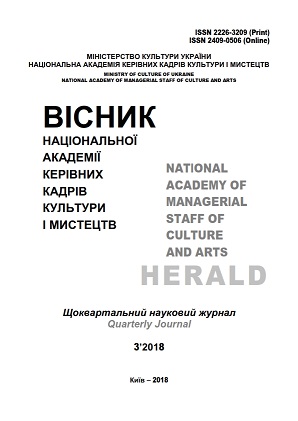Покрови у вигляді орла у візантійському мистецтві
Eagle-Shaped Covers in Byzantine Art
Author(s): Iuliia Gennadyevna MatveieivaSubject(s): Christian Theology and Religion, Visual Arts, Semiology, Aesthetics, Ancient World, History of Art
Published by: Національна академія керівних кадрів культури і мистецтв
Keywords: eagle; tent; cover; ciborium; fabric; umbrella; blessing; byzantine iconography;
Summary/Abstract: Aim of work. To reveal the informational and symbolic role of eagle-shaped covers in Byzantine art. To analyze this phenomenon and find out the reasons for combining into one artistic image of such different objects as an eagle, fabric, and a covered umbrella. The methodology of the study includes historical, iconographic and semiotic methods. The scientific novelty of the work is to uncover the role of architectural, textile, decorative and symbolic images with the image of an eagle as a cover in Byzantine works. The roots of the semantic connection of the eagle, cloth and umbrella are revealed for the first time. Their semantic connection explains the paradoxical system of images where the eagle, cloth and umbrella are combined forming a kind of a hybrid. Conclusions. The combination of eagles with the cloth and umbrella in Byzantine iconography was possible due to their semantic connection. This connection was based on bible texts and the outlook of people of that time. The eagle was a symbol of God's blessing, defence and cover. All these features in bible, ancient texts and culture were associated with a tent and a fabric cover that protected from the weather, covered from the enemy, preserved the shadow, and was a symbol of honor and presence of God's blessing.
Journal: Вісник Національної академії керівних кадрів культури і мистецтв
- Issue Year: 2018
- Issue No: 3
- Page Range: 312-316
- Page Count: 5
- Language: Ukrainian

